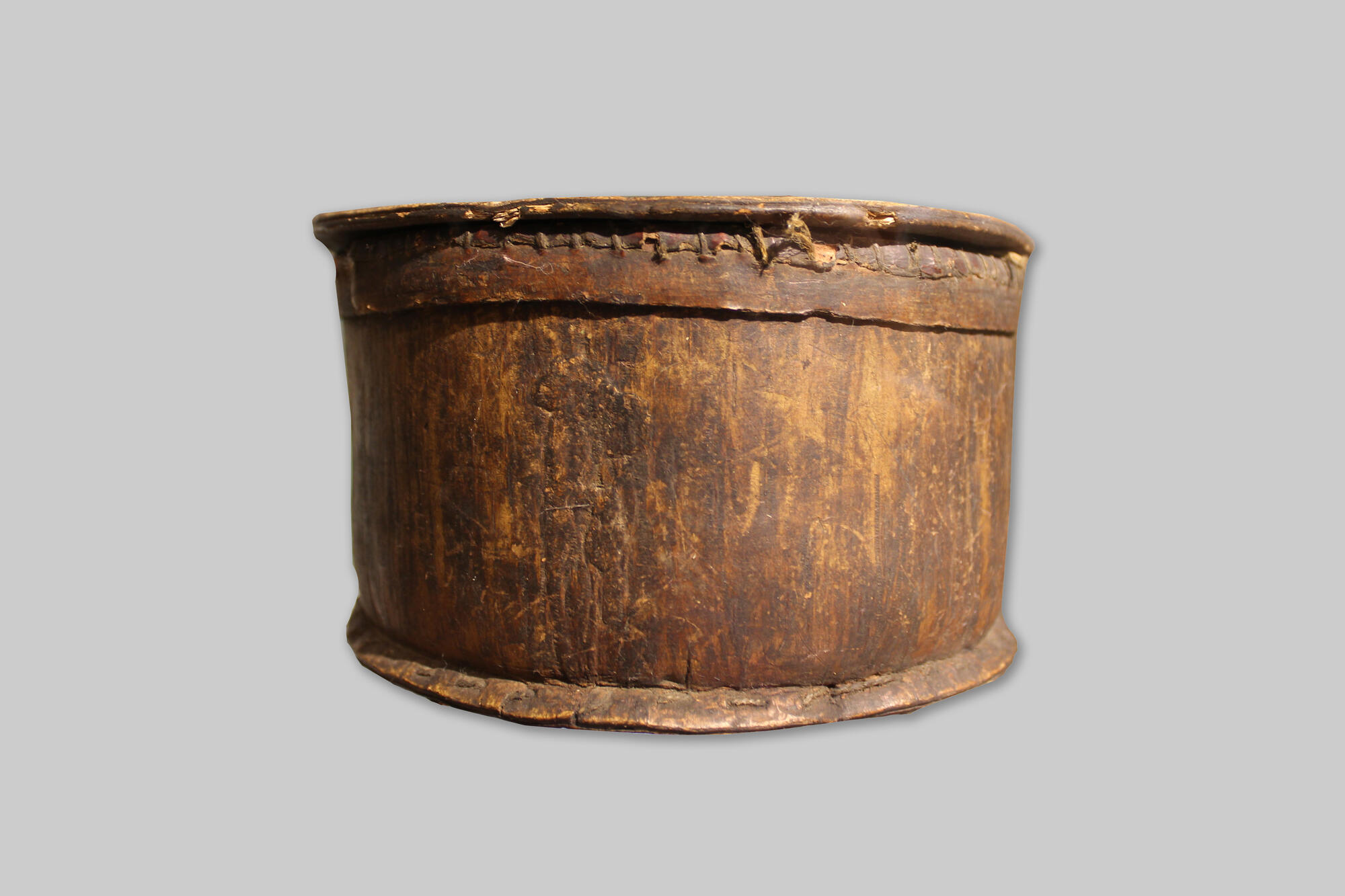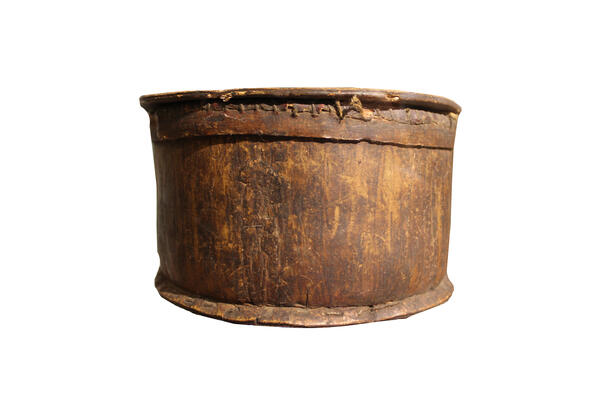Birch bark, or the top layer of birch — a unique material from which for centuries in Russia were used to make dishes, shoes, boats, roofs and also used for writing. Birch bark played an important role in Ostyaks household. Dishes, baskets for berry, baby cradles, and many other household items were made from it. Birch bark, sewn into a rolled-up cloth, served as a waterproof material — it was used for burial rites. The bark, divided into thin layers, was used for pasting objects to protect them from dampness.
In the old days, for lack of boilers, water was boiled in specially arranged baskets — boxes without a lid with oval sides, the white side of the birch bark facing out. Old baskets which had been used for several times, were used for feeding dogs.
Birch bark was extracted three times a year: in spring, when it easily peels off from the tree bast, in early June and in autumn, when the leaves fall. Women were engaged in the preparation of bark for utensils. Birch bark products were used as decorations with various patterns. For their application, there were about nine different techniques: embossing, openwork carving, applique, mosaic, impaling, applying a pattern with a stamp, and others. Almost all the techniques of ornamentation were held by women, but stamped patterns on birch bark were applied by a man. When working with birch bark, a knife and a needle were used to sew the pattern and products.
When going hunting, each Ostyak took a long black robe to the place of sacrifice for the spirit, similar to the clothes of a shaman, and a doll made of black rags. Also, for offerings, Ostyaks baked unleavened bread in a special dish. This bread, together with a piece of butter, sugar, and dried fish, was placed in a birch bark basket and left in the forest near the sacred tree they revered, firing five or more blanks into the air. Ostyak would leave a few pellets by the tree in honor of the spirit and, raising his head high, says: ‘Unhu, keep me safe so I do not fall by. You must comply with my request. I have already fulfilled your orders’. If Ostyak would want to drink wine in the forest under a sacred tree, he always poured the first glass under the tree.
In the old days, for lack of boilers, water was boiled in specially arranged baskets — boxes without a lid with oval sides, the white side of the birch bark facing out. Old baskets which had been used for several times, were used for feeding dogs.
Birch bark was extracted three times a year: in spring, when it easily peels off from the tree bast, in early June and in autumn, when the leaves fall. Women were engaged in the preparation of bark for utensils. Birch bark products were used as decorations with various patterns. For their application, there were about nine different techniques: embossing, openwork carving, applique, mosaic, impaling, applying a pattern with a stamp, and others. Almost all the techniques of ornamentation were held by women, but stamped patterns on birch bark were applied by a man. When working with birch bark, a knife and a needle were used to sew the pattern and products.
When going hunting, each Ostyak took a long black robe to the place of sacrifice for the spirit, similar to the clothes of a shaman, and a doll made of black rags. Also, for offerings, Ostyaks baked unleavened bread in a special dish. This bread, together with a piece of butter, sugar, and dried fish, was placed in a birch bark basket and left in the forest near the sacred tree they revered, firing five or more blanks into the air. Ostyak would leave a few pellets by the tree in honor of the spirit and, raising his head high, says: ‘Unhu, keep me safe so I do not fall by. You must comply with my request. I have already fulfilled your orders’. If Ostyak would want to drink wine in the forest under a sacred tree, he always poured the first glass under the tree.



